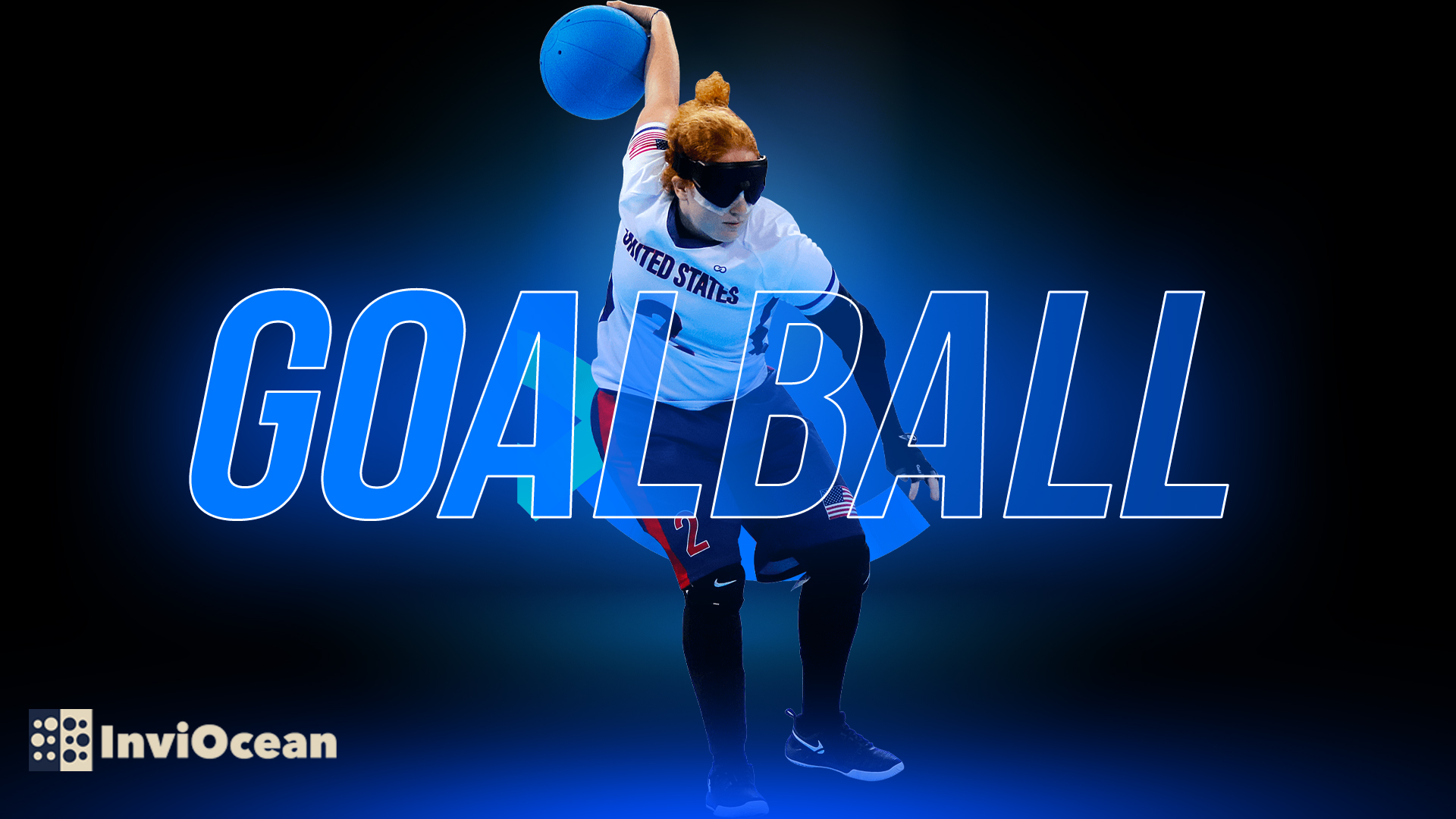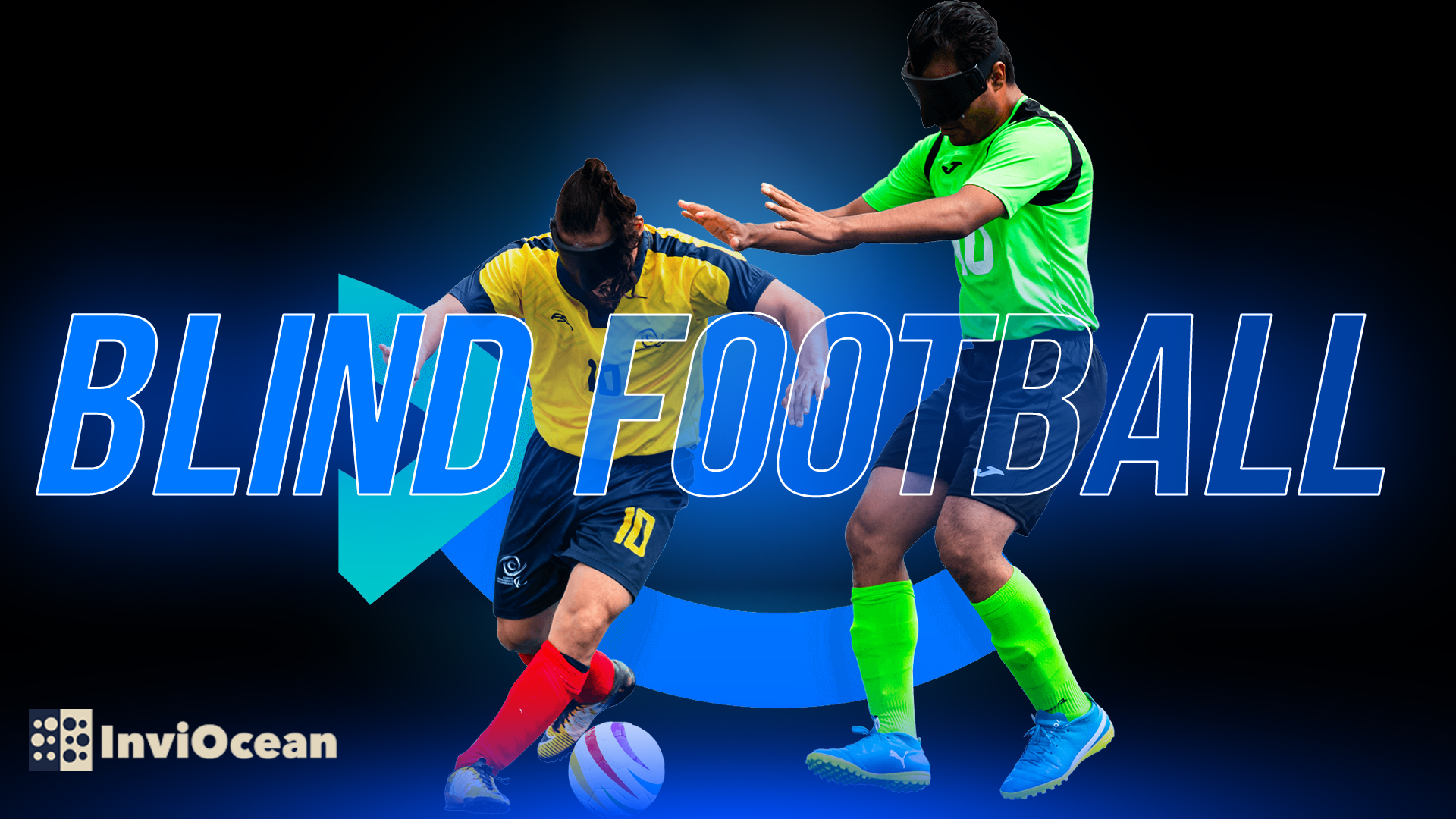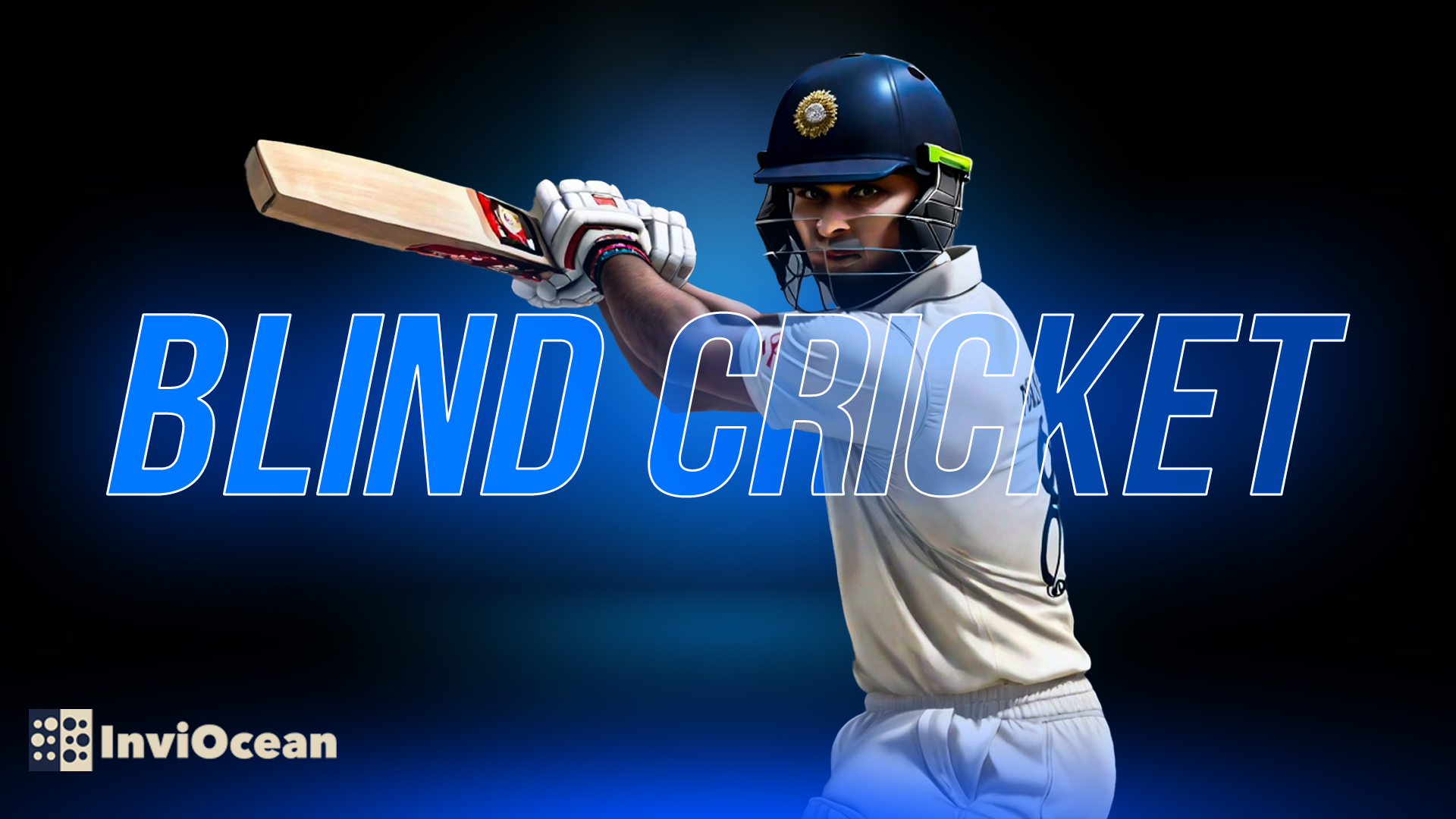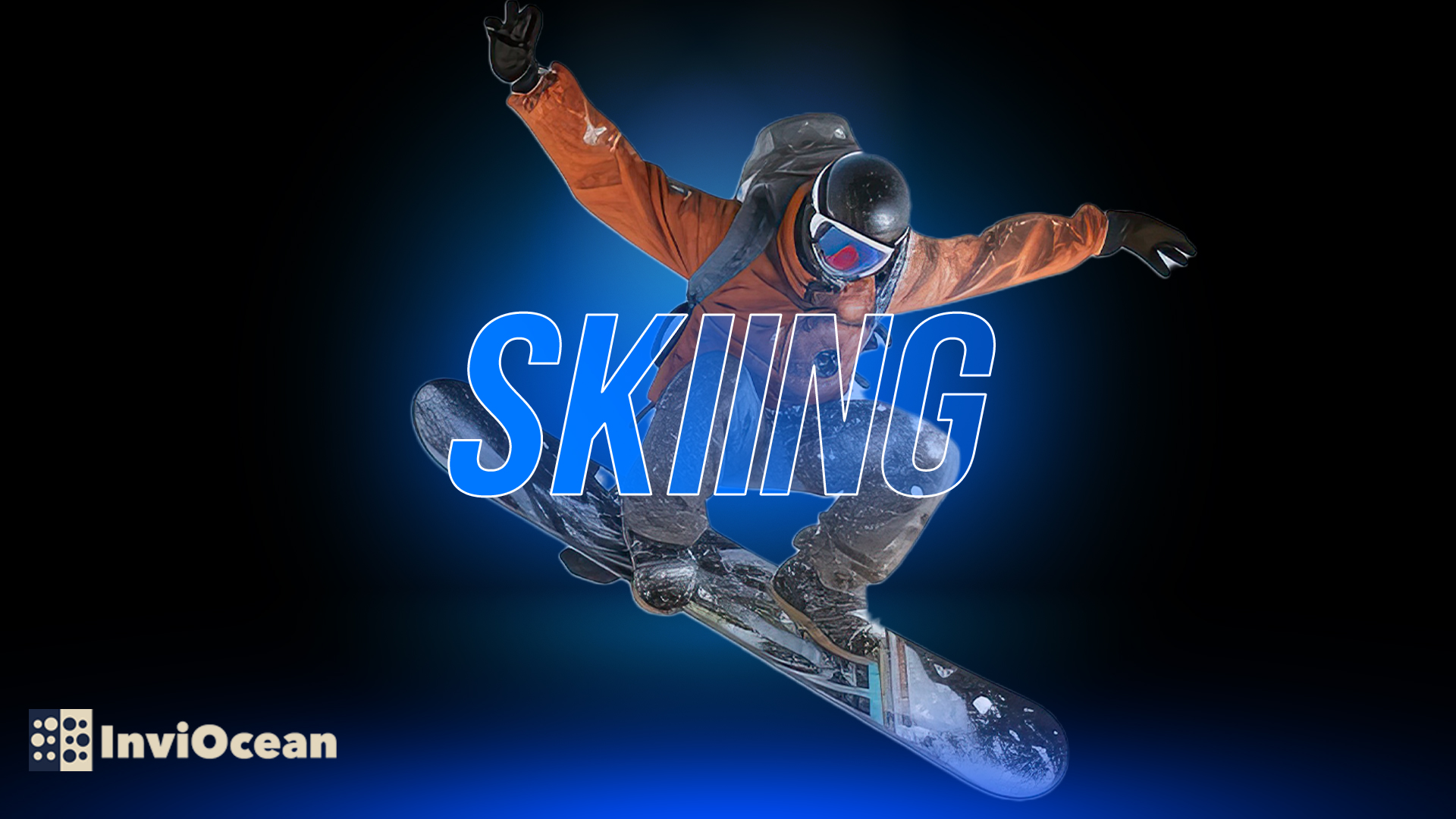Sports for blind people: Available activities
Blind individuals, like anyone else, share a desire to stay physically fit for both health benefits and enjoyment. This reflects a broader commitment to leading active, fulfilling lifestyles that go beyond the boundaries of visual limitations. In this article, we will explore the diverse landscape of blind sports, ranging from adaptive and inclusive team games to individual pursuits that showcase athleticism.

Goalball
Goalball is a blind olympic sport specifically for athletes with visual impairments. It was created in 1946 as a means of assisting in the rehabilitation of visually impaired World War II veterans. Goalball is for individuals with visual impairments, it has gained significant popularity in recent years. This sport features annual national competitions for both men and women and active participation at international and Paralympic levels. This is an indoor game on a rectangular “pitch” resembling the dimensions of a volleyball court. There are goal posts positioned on each team’s baseline. Each team has three players, and they use an audible ball. They take turns throwing the ball along the floor, aiming to cross the opponents’ goal line. The defending team endeavors to prevent this by strategically positioning themselves across and behind the ball. In official competitions, all players must wear light-impervious eyeshades.

Blind football
Sports for the blind offer inclusive opportunities for individuals with visual impairments to engage in physical activities. Among hobbies for blind people can be football. Blind Football is a dynamic 5-a-side soccer variant for athletes. They use a ball equipped with a noise-making device. The game unfolds on a smaller pitch enclosed by a rebound wall, featuring continuous action with no throw-ins and no offside rule. Each match consists of two halves lasting 25 minutes each, with a 10-minute halftime. Teams have four visually impaired (VI) outfield players wearing eyeshades for fairness and a goalkeeper, who may be fully or partially sighted.
Introduced as a Paralympic event in 2004, Blind Football emphasizes dribbling and short passing. The crowd maintains silence during play to enable players to hear the ball, their teammates, and their opponents.

Swimming
Swimming provides a unique activity for blind people, promoting both physical fitness and a sense of inclusion. Many swimming pools around the world actively welcome swimmers with sight loss during designated public sessions, ensuring accessibility for diverse individuals.
As the popularity of swimming among the blind and partially sighted community grows, various organizations and initiatives work towards fostering a supportive environment. British Blind Sport (BBS), for instance, annually organizes a swimming gala in Worcester. This event not only serves as a platform for swimmers of all ages to showcase their skills but also contributes to building a sense of community within the visually impaired population.
In addition to regular swimming opportunities, the rise of regional, national, and international competitions underscores the expanding scope and recognition of swimming for individuals with visual impairments. Such events not only encourage participation but also offer a platform for swimmers to challenge themselves, set goals, and experience the thrill of competition.

Table Tennis
Fun activities for blind adults may include Vision Impaired Table Tennis, also known as Swish. It’s a dynamic and energizing game originating in Australia. Developed by individuals who are blind, it has gained popularity in both recreational and competitive settings. The game provides an inclusive platform for participants who are blind, vision impaired, and sighted to compete on nearly equal terms.
In Vision Impaired Table Tennis, the gameplay resembles traditional table tennis, but with a unique twist. Instead of hitting the ball over the net, players strike the ball under the net, traversing along the table’s surface. To ensure fairness, the net is set at a specific height, eliminating advantages based on varying degrees of sight. The ball used has audible bells inside, maintaining an auditory element, and is approximately the size of a tennis ball with perforations. The rectangular bat features a handle for precise control.

Blind Cricket
Blind cricket is a modified version of the traditional cricket game, designed to accommodate players who are blind or partially sighted. The cricket pitch retains the same dimensions as the standard pitch used in sighted cricket.
In blind cricket, the current ball is crafted from white plastic and contains metal washers, producing an audible sound when bowled or thrown. All bowling actions are performed underarm to ensure fair play.
A team in blind cricket comprises 12 players, with four classified as totally blind and eight as partially sighted. Rule adaptations have been implemented to facilitate the full engagement and participation of all players in the game, fostering an inclusive and enjoyable experience for everyone involved.

Horse riding
What can a blind person do for fun? The options are limitless, including adaptive sports. Horseback riding is a universally enjoyed activity that caters to people of all ages, and many riding schools are now equipped to offer training and facilities for individuals with disabilities, including those with sight loss.
For beginners, instruction typically commences in an indoor arena, where instructors provide verbal directions to guide riders. As participants gain proficiency, they can advance to riding outdoors. In the initial stages, a long rein may be used, often attached to a leading horse with the learner rider on the following horse. Remarkably, some individuals who are blind or partially sighted have not only learned to ride but have achieved a high level of independence and skill in equestrian activities.

Golf
Golf has gained popularity among individuals who are blind or partially sighted in recent years, with events like the Blind Golf Championships sponsored by Sight and Sound in 2010. The sport follows nearly identical rules and utilizes the same equipment as traditional golf. Blind golfers receive assistance from a sighted guide who ensures proper club positioning, describes the hole, and provides distance information for each shot. Moreover, the handicapping system in blind golf allows for fair competition, enabling blind and sighted golfers to participate fully in the sport.

Polybat
Polybat is a sport specially designed for individuals who are totally blind and shares similarities with Table Tennis. People play this game on a rectangular table with raised edges, featuring a wooden bridge across the center. This bridge allows enough space for a small ball with plastic beads inside to pass underneath. Participants use square wooden bats with handle extensions to strike the ball from end to end. They aim to defend their sunken goal and score points by dropping the ball into the opponent’s goal. Like table tennis, Polybat offers a fast and exciting experience. Both single and double players can enjoy this activity.

Running
Running is an inclusive sport, suitable for individuals who are blind or visually impaired. Athletes with visual impairments participate in marathons, with some capable of navigating the course independently, while others, especially those who are totally blind, rely on sighted guides for assistance. The running community has witnessed the active participation of individuals who are blind in marathons, biathlons, and triathlons. Notably, the United States Paralympics team features a dedicated track and field division, providing opportunities for runners with visual impairments.

Skiing
Activities for a blind person can include adaptive skiing. The origins of skiing for individuals who are blind or partially sighted trace back to the cross-country (Nordic) style. Over time, advancements in training techniques and aids have facilitated the extension of this activity to downhill (Alpine) skiing. In Alpine skiing, two guides strategically position themselves on either side of the skier, all connected by a light metal bar. This synchronized trio navigates the slope, changing direction through verbal communication.
As skiers progress in skill, the need for the metal bar diminishes, and the reliance on verbal instructions from a single guide becomes paramount. This one-to-one instruction method has proven highly effective, enabling individuals with visual impairments to become adept downhill skiers rapidly. Recent innovations, such as radio contact between skier and guide, have further enhanced the instructional experience. Consequently, the participation of blind and partially sighted individuals in skiing has steadily increased, reflecting the expanding accessibility and proficiency in this exhilarating winter sport.
Goalball is a unique ball game for individuals who are blind and visually impaired. However, many sighted individuals also participate on local teams for enjoyment. Goalball utilizes a ball equipped with bells, allowing players to locate its position through audible cues. Consequently, maintaining silence at events is crucial.
Blind football is a variant of five-a-side football, specifically adapted from futsal. It is sometimes referred to as B1 football or football five-a-side. Outfield players must be registered as B1 (completely blind), while goalkeepers can be either sighted or partially sighted.
Beep baseball is a version of America’s pastime developed for those with vision impairment. The sport incorporates audio cues and specialized equipment to alert and guide players. It is overseen by the National Beep Baseball Association (NBBA), one of numerous adapted sports organizations in the United States.
